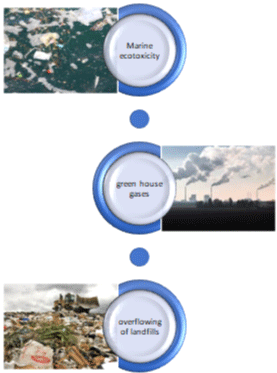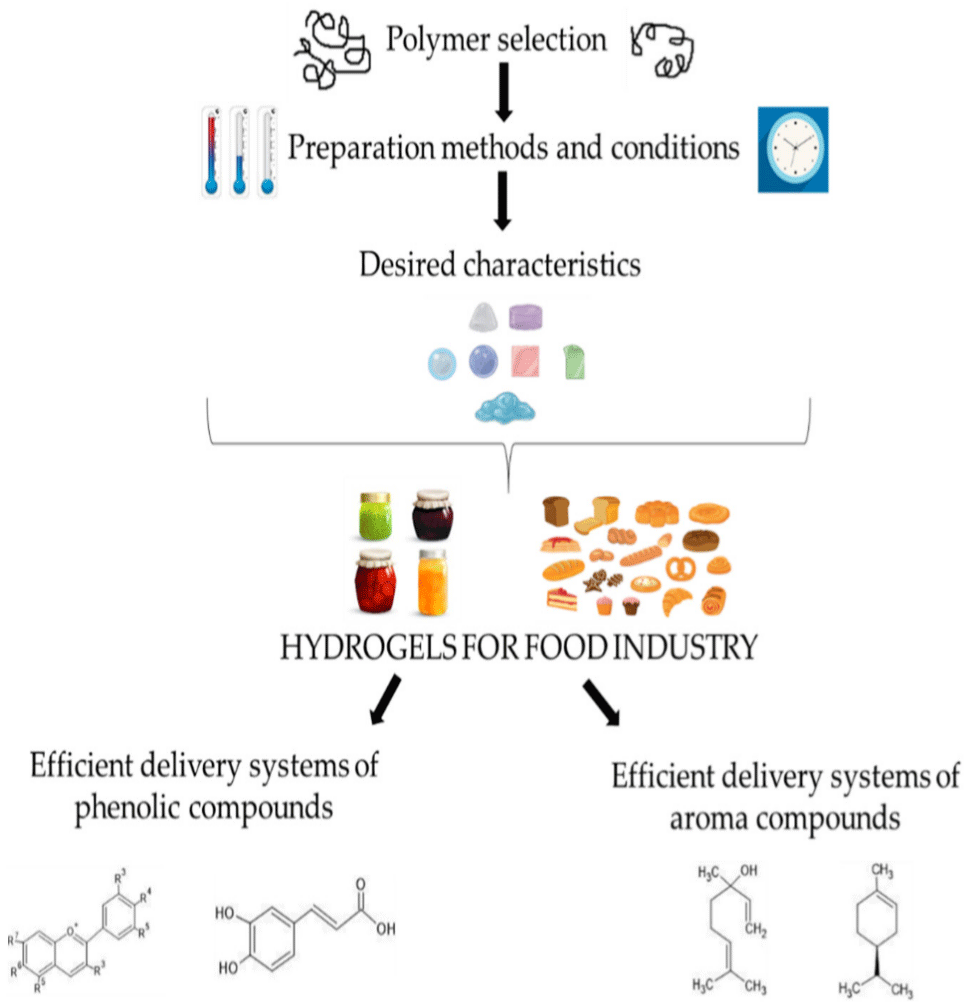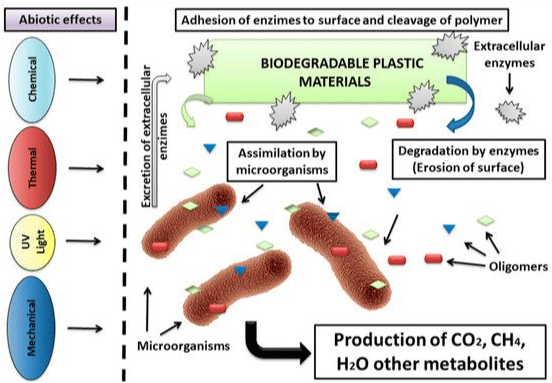
Review Article
Austin J Microbiol. 2022; 7(1): 1039.
Role of Food Microbiology in Food Safety and Food Security and Biodegradable Packaging of Food
Fareeha Sohail¹, Nadeem A¹, Maqsood T², Murtaza M³, Zafar F², Sheeza Arshad¹, Ahmed MJ4 and Sohail S³*
1BS, Department of Microbiology, Government College University, Pakistan
2BS, Department of Microbiology, University of Central Punjab, Pakistan
3M.Phil, Department of Biochemistry, University of Central Punjab, Pakistan
4Department of Microbiology, Government College University, Pakistan
*Corresponding author: Shehreen Sohail, M.Phil, Department of Biochemistry, University of Central Punjab, Pakistan
Received: July 25, 2022; Accepted: August 23, 2022; Published: August 30, 2022
Abstract
Environmental and food safety concerns are driving the development of biodegradable packaging as a partial replacement for petrochemical-based polymers. This review will keep you up to date on the latest developments in biodegradable packaging materials and the role of virtual technology. Gelatin, starch, chitosan, cellulose, and polylactic acid are examples of common biodegradable materials. Tensile strength, tear resistance, permeability, degradability, and solubility are all properties that influence the selection and use of food packaging materials whereas assimilation is useful in process of biodegradation. Microbial enzymatic actions and bio assimilation can degrade biodegradable films in soil. To improve the performance of packaging materials, nanoparticles are incorporated into blended films.
Keywords: Food Safety; Disposable; Biodegradable; Plastic; Polyethylene; Co-polymer
Introduction
One of the best ways by which food microbiology has enabled us to preserve and secure food is the introduction of biodegradable food packaging. It not only maintains the nutritional value of the food but also helps in avoiding microbial and chemical impact [1]. The unique properties of polystyrene foam and plastics had attracted the world for so many years making their use common in household and industries. The fact that their use become so common and excessive that scientists and researchers had to highlight their negative impacts bring attention towards adapting any alternative way. Using polyethylene and co-polymer-based packaging is continuously creating a negative impact on our environment. Not only these old processes require more petroleum, energy, chemicals and water but also, they emit greenhouse gases, different heavy metals and particulate matter. Since these old methods are non-biodegradable so, the only way of their disposal is landfills. Once these landfills will reach their limit, there will be no way to discard them. With the exponential increase in population, the use of food products will definitely increase. Their plastic and non-degradable packaging will do no good to the environment [2].
Biodegradable Food Packaging
Biodegradable food packaging has been found valuable keeping in view the ultimate goal of food packaging which is protecting food from physical, chemical and biological damage as well as preserving it for a long time. The different types and forms of packaging for food security. The easy availability and biodegradable ability make it environmentally friendly. Many juice companies have started the initiative of paper straws instead of plastic straws to encourage the use of paper packaging. Others have developed paper bottles for carbonated drinks and milk. One of the main advantages is the multi usage of paper packaging since it can be recycled into many different things. Whereas, plastic can only be recycled into plastics. Flour and spices are well sealed in paper packaging as it helps to keep out the pests. Other food packaging where paper is used are: Ice-cream cups, Microwave popcorn bags, Carton of milk, Fast food packaging, Egg crates [3]. It includes many types like: Bubble wrap packaging, it is not only light weight but also safe for transporting food products over long distances. During shipping of food items from one place to another, bubble wraps are frequently used. These bubble wraps are not only biodegradable but also recyclable [4]. Cornstarch packaging being biodegradable, it minimizes the need of polystyrene and plastics. These packaging containers are made by fermenting plants starch with the help of polylactic acid. Its naturally degrading ability makes it eco-friendly. Many countries are putting ban on plastic packaging and shifting to corn starch packaging since, it is cheap and easily available. These packaging can resist the fats and oil of the food [5].
Biodegradable Plastics
Synthetic plastic being non-degradable keeps on adding waste in our environment. On the contrary, biodegradable plastics being degraded by action of micro-organisms which may include bacteria, fungi or even algae require 65% less energy [6]. When these biodegradable plastics decompose, products like water, carbon dioxide and biomass are produced [7]. These biodegradable plastics play an important role in food packaging by three major ways. Food is protected from any physical, chemical or biological damage by these biodegradable plastics. Food can be stored for safe transport and helps in labeling of the ingredients. Bioplastics can be made from various things like cornstarch, sawdust, woodchips, vegetable oil, agricultural by-products, genetically modified plants. Majorly they are derived from the sugar derivatives. Considering all the points, bioplastics are divided into some major types.
Starch based
Cellulose based
Protein based
Bioderived polyethylene
Aliphatic polyesters
Derived from cornstarch and potato starch
Derived from cellulose esters
Derived from protein sources like milk, casein, soy protein
Derived from ethanol
Derived from lactide and glycolide
Table 1: Types of Bioplastics.

Figure 1: Disadvantages of non-biodegradable packaging.

Figure 2: Importance of biodegradable plastics.

Figure 3: Use of hydrogel in food industry.

Figure 4: Biodegradation process.
Plastic packaging has ruled the world for many years. Replacing them within a day would not be possible since people are used to them. Creating and adopting awareness will happen gradually. Until that, the best possible way is the better upgradation of plastic into biodegradable plastics.
There are many different types of materials being used for packaging but the most common one’s are discussed as starch: Its low cost and 100% biodegradable nature makes it sustainable material which is produced as a result of photosynthesis. The idea of packaging materials to get into food is one of the major concerns. But using starch-based polymers like Starch composite plastic makes the acceptable food contact. They are easy to be manufactured as the major extraction source is from food waste including pulp and seed waste [8]. Chitin and Chitosan are also used. Chitin found abundantly in lobster and crab shell is the main building block of fungi and invertebrates. Its co-polymer chitosan is suitable for food packaging because of its antimicrobial and antifungal nature and the fact that enzymes for its degradation are found in large quantities. Using nanobased chitosan will even produce packaging protecting food from UV light [8]. Glutennon-toxicity of gluten leads to the packaging material with high water resistance. It is highly suitable because it produces no harmful by-products and among all the other polymers, its rate of degradation is the highest. Pectinin fresh and cut fruits and vegetables are covered with pectin-based coatings which keeps them fresh by avoiding fungal decay which makes it suitable to use a biodegradable material for food packaging. Cellulose and Alginate are the excellent strength of cellulose provides packaging capable of keeping food safe whereas alginate has anti-bacterial properties which helps to increase shelf life of food. The abundant availability of both these products makes their use common and suitable [9]. Apart from the above listed materials, the other materials used are: Soy proteins, Zein, Peanut protein, Bio composite, Aliphatic polyester [8].
Forms of Food Packaging
Films
They are used in replacement of polyethylene films because of their unique and better properties. They maintain the structural integrity of food as well as provide good barrier properties. The chances of food spoilage are minimized. PLA food packaging is mostly used for fruits especially tomatoes. They have excellent transparency. Paragon films are used for cheese packaging. Corn based films helps to keep the food fresh. Other types of films are blown films and TPS (thermoplastic starch) films. TPS films have coating of PHA and PHB [10].
Bags
The most popular form of food packaging is the use of biodegradable bags. The properties like their flexible nature, strong resistance, ability to withhold temperature change makes them suitable for everyday use. This will decrease the usage of polyethylene bags and will keep the environment healthy.
Containers
Using biodegradable food packaging and still maintaining the quality is a huge task. This can be achieved by using thermoformed containers for fruits, salads and vegetables as these containers are resistant to moisture. These trays can be frozen easily as their structural properties do not change. In order to make these biodegradable containers, polymers are transformed to sheets by melt extrusion and then they are molded to any shape. Mangoes, melons and other fruits can be stored in trays which are made from oriented PLA. Shelf life of fruits packed in them do not change. It remains the same [10].
Foamed Packaging
Starch based foamed products like trays and clamshells are used for food packaging. The main requirement in this packaging is the use of direct food contact coatings like paraffin. There must be a proper adhesion between the foamed product and the coating. The famous foams used for food packaging are: Novamont (a starch-based foam) and Green-cell foam (alternative of polypropylene foams).
Gels
Microbial contamination is prevented by the use of biodegradable gels like hydrogels. Experiments of implementing hydrogels on lettuce and pepino fruit has shown no side effects. Even this gel has been found valuable for maintaining beta-carotene of pepino fruit.
Process of Biodegradation
The conversion of polymer into products like carbon dioxide, water, biomass and methane by the action of microbes is called biodegradation. It is completed in five different steps. Biodeterioration: Tiny fractions of biodegradable materials are made by biotic and abiotic factors. Depolymerization: Monomers, oligomers and dimers are produced by the enzymatic action. These enzymes are released by micro-organisms. Recognition: Receptors of microbes are able to recognize some fragmented monomers and allow them to pass through their plasma membrane. While those which are not recognized remain in the surrounding. Assimilation: As soon as these fragments gain entry in cytoplasm, they produce primary and secondary metabolites by integration with the metabolism. Energy is also released in this process. Mineralization: Organic acids and aldehydes are secreted by microbial cell into extracellular surrounding. Molecules like water, carbon dioxide and methane are released into the environment [10].
Applications of Biodegradable Food Packaging
There are three major applications of biodegradable packaging. These are:
Modified Atmosphere Packaging
The packaging using the atmosphere other than oxygen is termed as modified atmosphere packaging. The gaseous composition of oxygen and carbon dioxide in the headspace of fruit and vegetable packages is changed which delays their ripening. The maintenance of humidity level controls the water loss. Bio-based packages with oxygen absorber increase the shelf life of strawberries. In order to keep lettuce, broccoli, tomatoes and blueberries fresh for longer period of time, biodegradable laminate is used as MAP material.
Edible Packaging
This packaging can be consumed along with the food since it is made of proteins, polysaccharides and lipids. Gelatine coating has found to be controlling the moisture and oxygen level along with limiting the oil migration. Collagen casing used for sausages is very common. Meat and cooked meat products can be preserved by collagen-based films by maintaining their juiciness.
Active Packaging
This innovative packaging has scavenging system which removes oxygen, carbon dioxide, moisture, odour and a releasing system which add flavors, antimicrobial agents into the packaging increasing the shelf life [10]. Biodegradable packaging has shown remarkable benefits in every aspect but food industries have benefitted the most from it. Some of the advantages are discussed as eco-friendly as it does not produce any toxins in the environment so, it helps to make a better healthy future. Resources like electricity and water are used lesser than conventional methods, cost effective, shelf life of food is increased and less food waste is produced, Landfills will not be overcrowded because during bio-degradation no such waste is produced, Carbon dioxide emission is reduced, Dependence on oil is reduced. Pollution due to fossil fuels will be controlled [1].
Conclusion
Using biodegradable materials for food packaging shows promising results. In order to make it even a more successful approach, nanotechnology is being used. This would not only improve the process but will also be cost-friendly. Several modifications can be made into the polymers by the strong interaction between the polymer matrix and nanofiller. Experiments on Chinese bayberry show remarkable results of fruit respiration and decay inhibition by using packaging with antimicrobial compounds like nano-titanium dioxide and nano-argentum [11]. Ethylene production in apples can be inhibited by nano-zinc oxide. Similarly, use of different nanoparticles in food packaging has shown a way of their preservation. Still there is need to work on this technology as migration of compounds like silver from packaging to food can cause serious problems [12]. Food is the need of every human being. One of the largest working industries is also of food. People can avoid other necessities but they need to buy food, preserve it, secure it to transport it over large distances. Every step requires packaging of food. Starting the initiative of biodegradable food packaging will not only provide the benefits of food security and safety but will also keep the pollution free environment. Biodegradation process proves that food microbiology is the better future and it will make a difference.
References
- Ivankovic A, Zeljko K, Talic S, Bevanda A M, Lasic M. Biodegradable packaging in the food industry. Journal of Food Safety and Food Quality. 2017; 68: 23–52.
- Chisenga SM, Tolesa GN, Workneh TS. Biodegradable Food Packaging Materials and Prospects of the Fourth Industrial Revolution for Tomato Fruit and Product Handling. International Journal of Food Science. 2020; 2020: 1-17.
- Deshwal GK, Panjagari NR, Alam T. An overview of paper and paper based food packaging materials: health safety and environmental concerns. Journal of Food Science and Technology. 2019; 56: 4391-4403.
- Shabbir A. Edible and biodegradable Food Packaging. Weekly Technology Times. 2019.
- Iverson J. Why Switching to Cornstarch Packaging is beneficial to your business. Knowledge Base. 2021.
- Ahvenainen R. Novel food packaging techniques (1ST ed.). Elsevier. R Ahvenainen - 2003.
- Shaikh S, Yaqoob M, Aggarwal P. An overview of biodegradable packaging in food industry. Current Research in Food Science. 2021; 4: 503-520.
- Gupta P, Toksha B, Rahaman M. A Review on Biodegradable Packaging Films from Vegetative and Food Waste. Chemical record. 2022: e202100326.
- Popa M. Biodegradable material for food packaging applications. Journal of Environmental Protection. 2011; 1825–1834.
- Shaikh S, Yaqoob M, Aggarwal P. An overview of biodegradable packaging in food industry. Current Research in Food Science. 2021; 4: 503-520.
- Wang K, Jin P, Shang H, Li H, Xu F, Hu Q, et al. A combination of hot air treatment and nano-packing reduces fruit decay and maintains quality in postharvest Chinese bayberries. Journal of the science of food and agriculture. 2010; 90: 2427-2432.
- Dhall R K, Alam M S. Biodegradable Packaging. In Encyclopedia of Renewable and Sustainable Materials. Elsevier. 2020.